253 SACD / Dmitri Shostakovich: Symphony no. 9 op. 70, Symphony no. 5 op. 47
Description
Pictures while listening to symphony no. 9: A joyful, almost boisterous opening movement. A dreamy, contemplative second followed by a sparkling presto. And then this short fourth movement, the helpless lament of a lonely bassoon, still showing signs of vitality against the stark, unbending, unison brass. A small, tormented individual under brutal state power. Nevertheless, still it laments. The dictator repeats his demand. But the bassoon does not totally lose heart. It starts the last movement with a shy, slightly mischievous dance that becomes gradually more light-hearted. Somewhere along the line, the timpani and horns give the signal to rise up, initially very softly. This is the announcement to the dictator: watch out, Stalin, this is it, now I'll make you think with pen and ink! The furious ascent peaks with a grotesque triumphal march that sounds like liberated laughter. The powerless one makes fun of the all-powerful – and then whistles in his face! Looking back, the question arises: who is the one lying as heavy as cold sheet metal in an eternal bottomless pit and who is the one who remains laughing in history? Judging by the music, by the 9th symphony Shostakovich had put the worst of times behind him. Quite different from in the 5th, but that's another story. Another story, by the way, that you can also find in this cinema.
Is that just my idea? Or does it come from the fact that the Concerto Budapest and András Keller tell the story in such a straightforward manner? It almost seems as if there are people playing here who are marked by the aftermath of those times.
3 reviews for 253 SACD / Dmitri Shostakovich: Symphony no. 9 op. 70, Symphony no. 5 op. 47
You must be logged in to post a review.

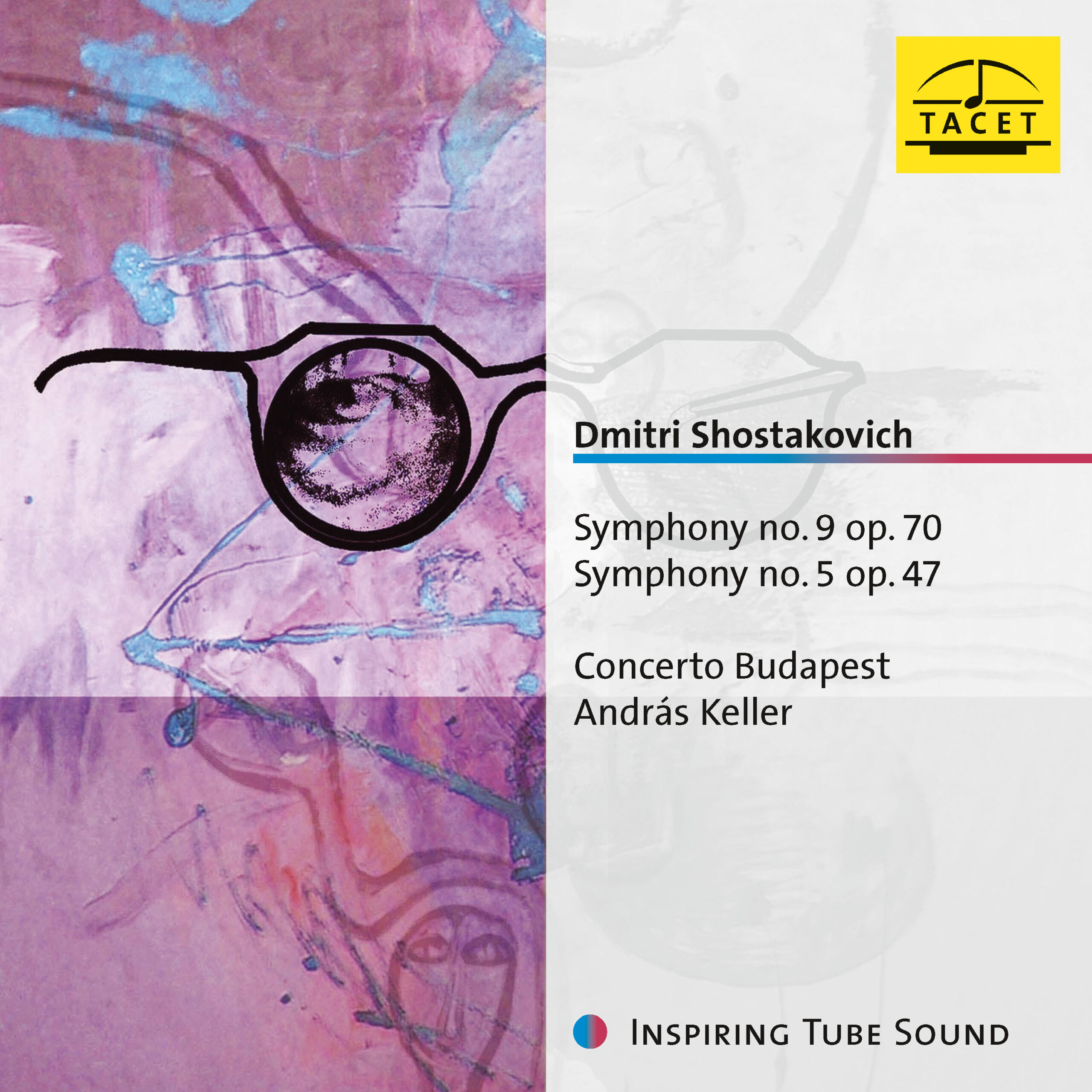

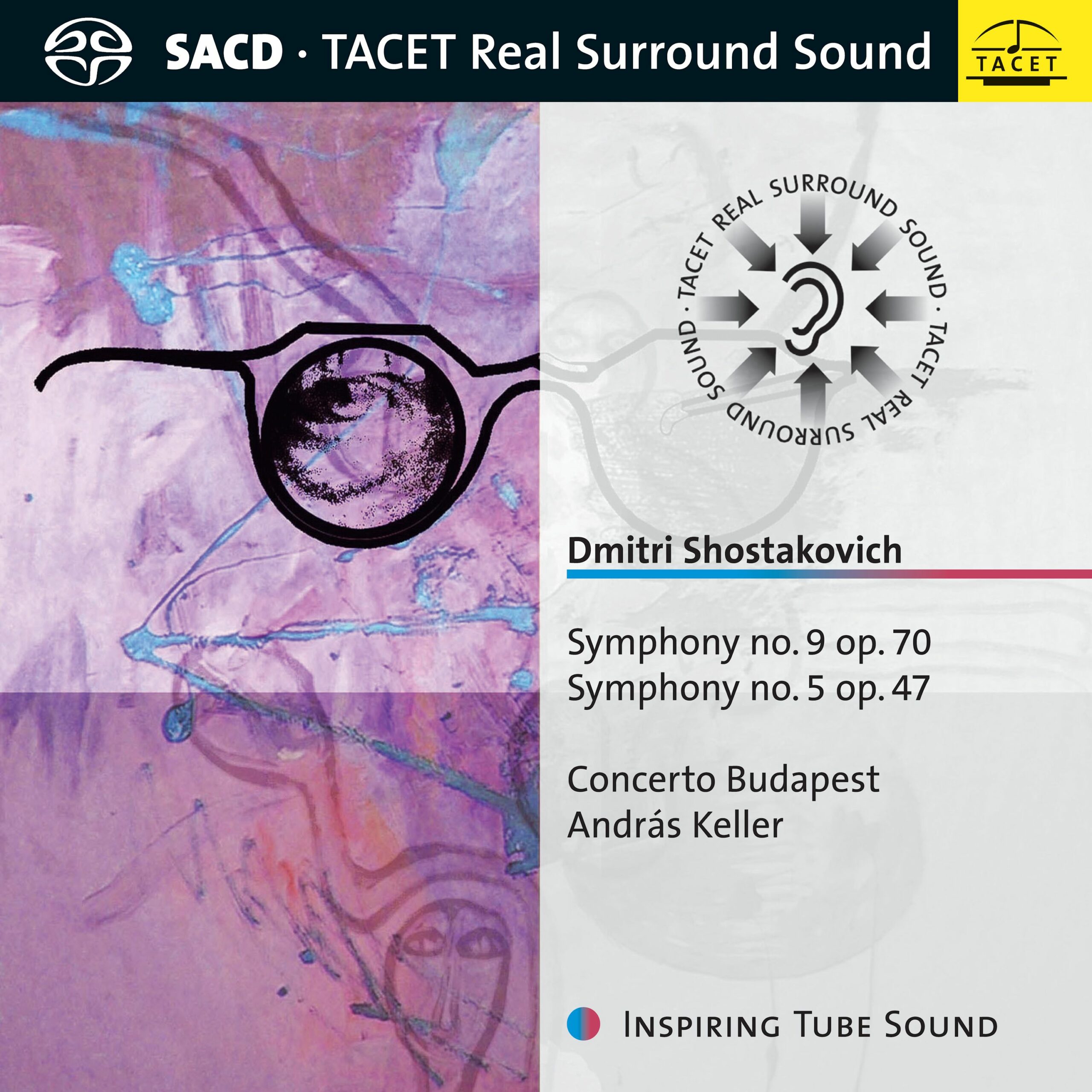
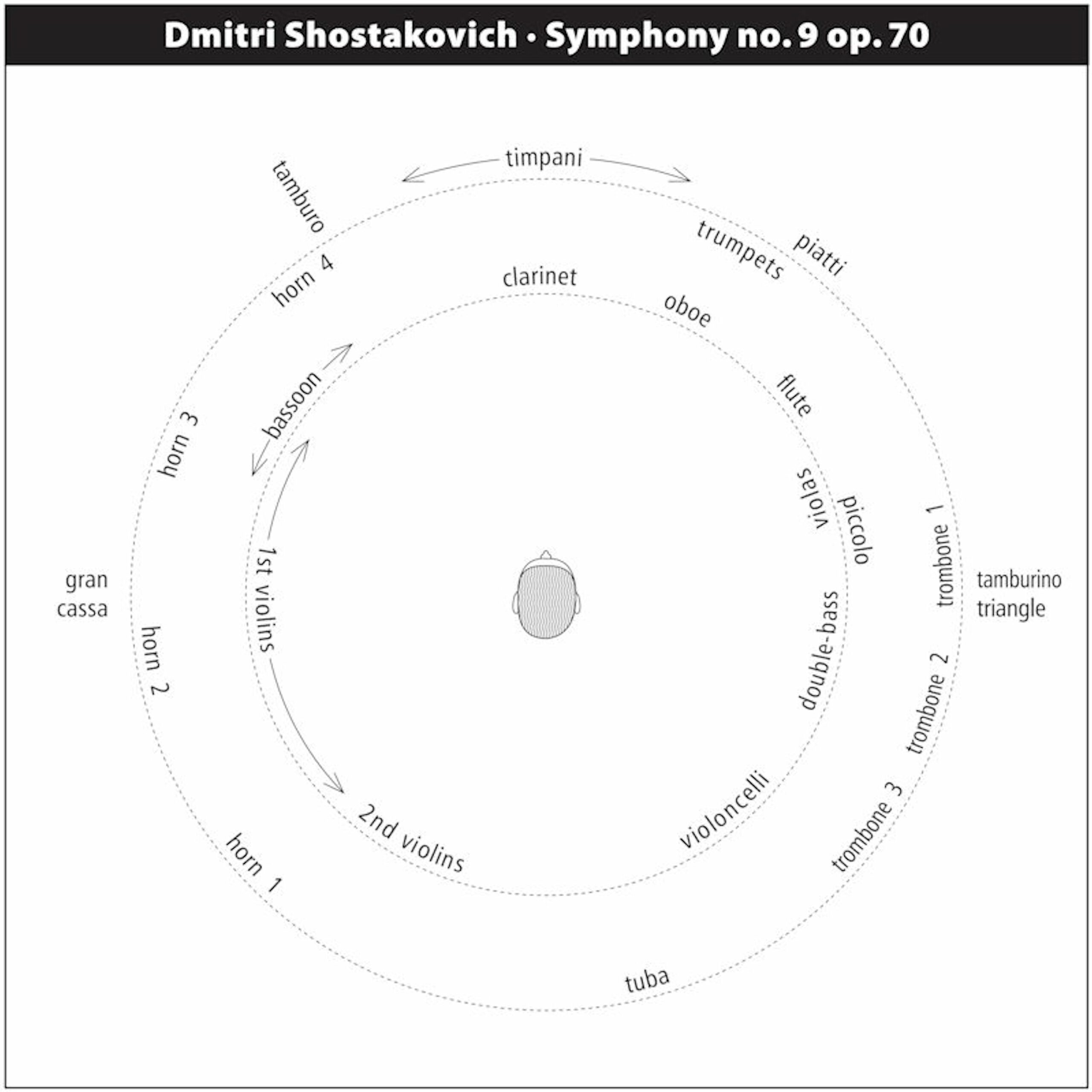
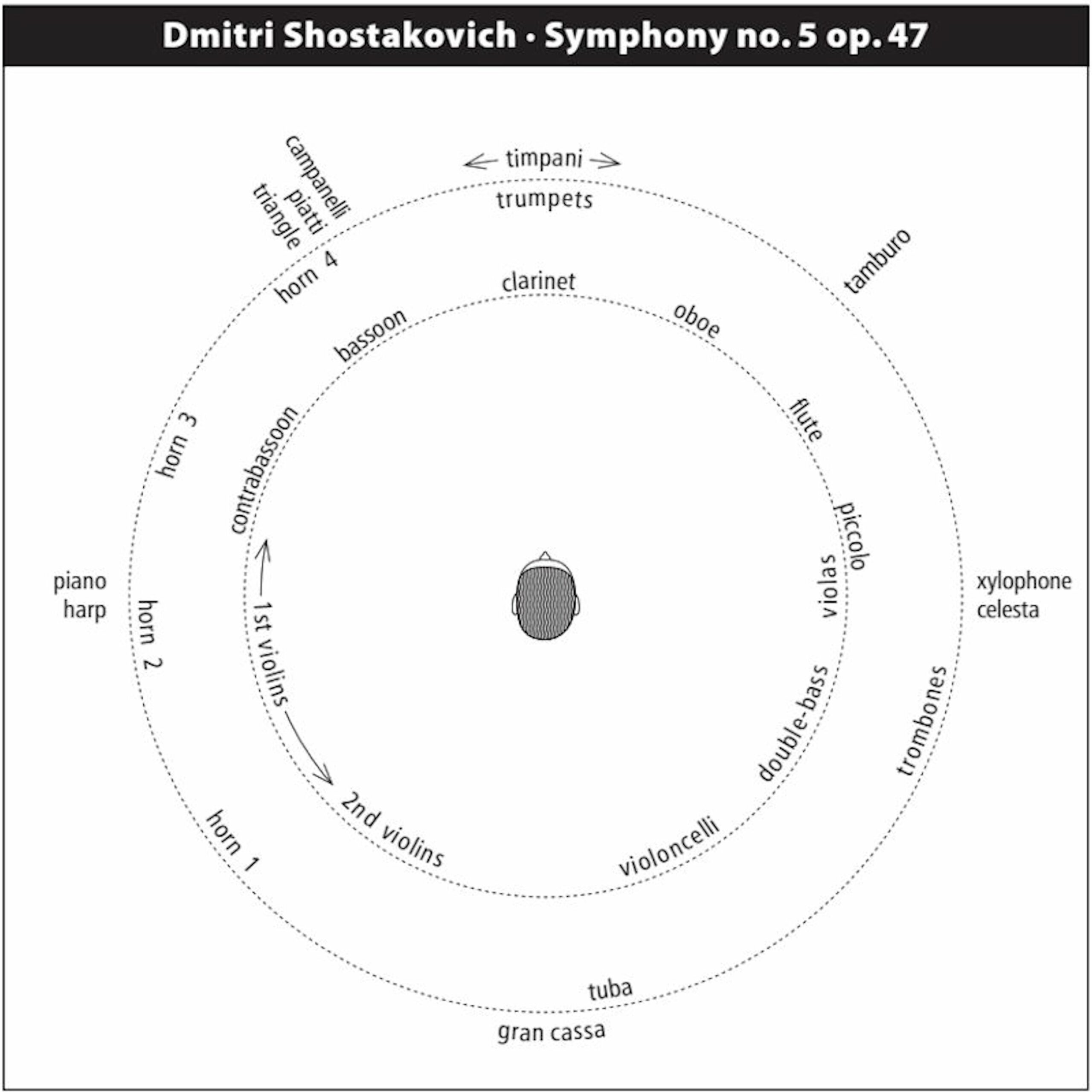
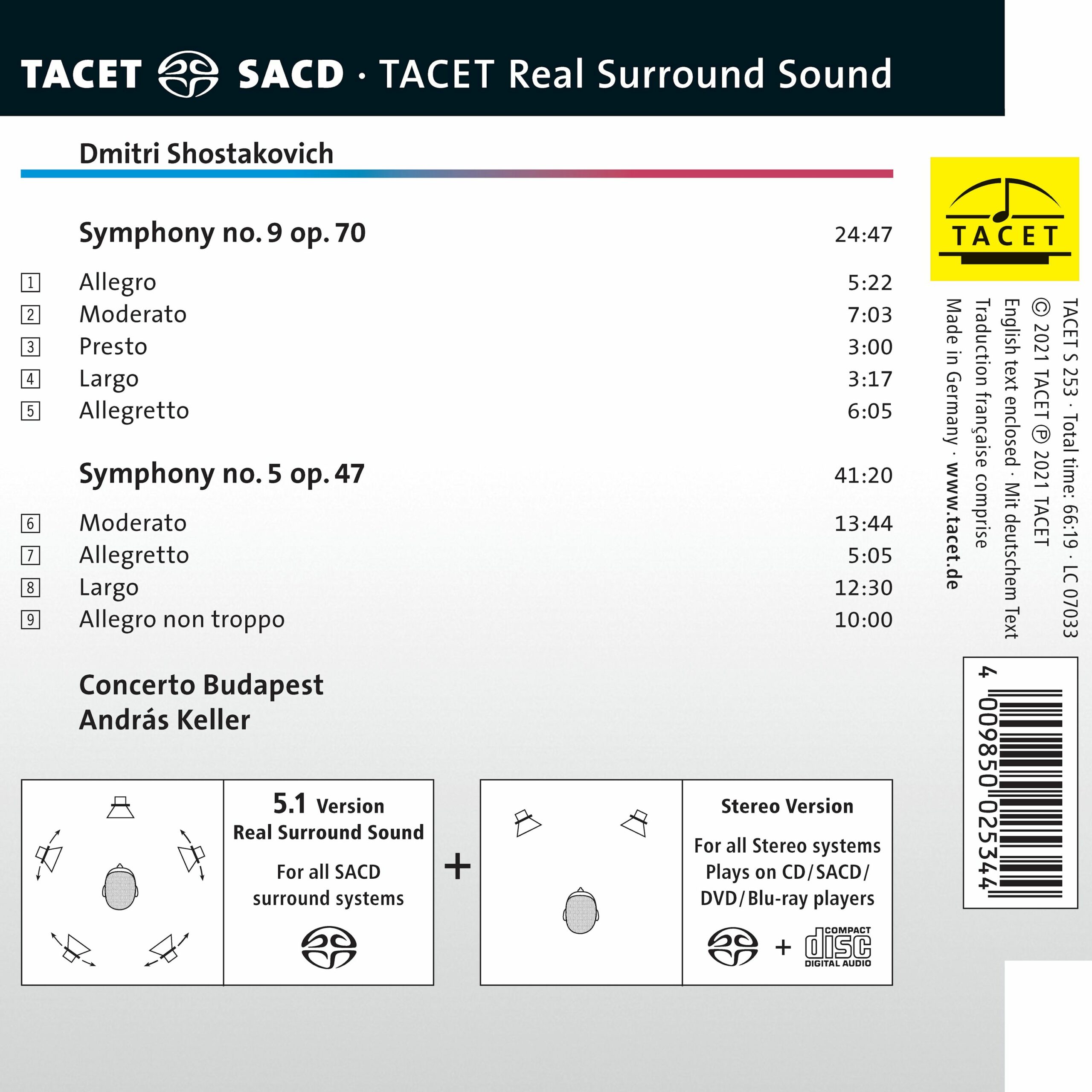


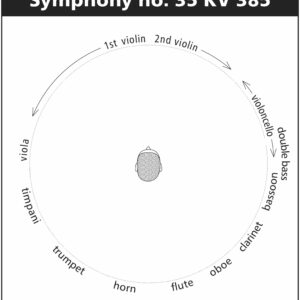
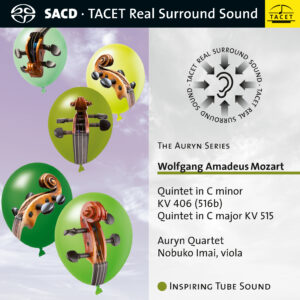
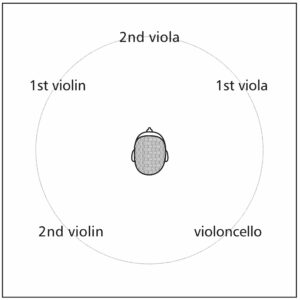

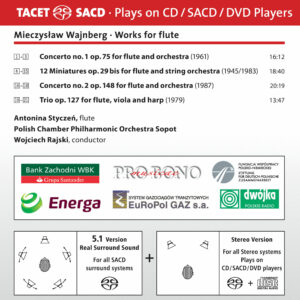

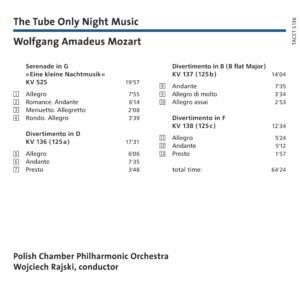
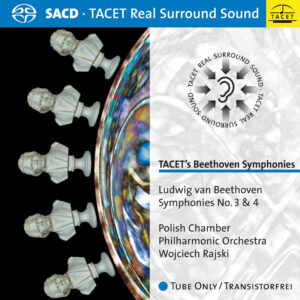
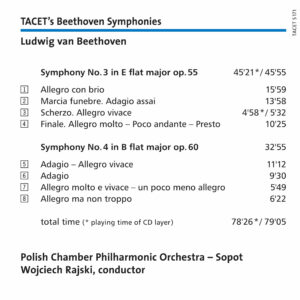
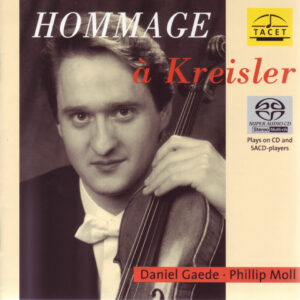
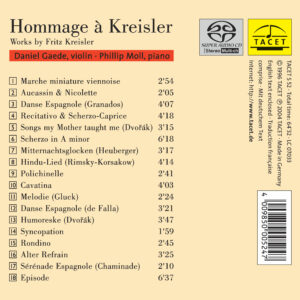
Audio –
Das hatten sich Sowjet-Diktator Stalin und seine Kultur-Kamarilla ein bisschen anders vorgestellt: Der von ihnen getriezte Dmitri Schostakowitsch lieferte ihnen 1945 als seine „Neunte“ keine dröhnende Sieger-Sinfonie, sondern ein knappes, vielbödiges Instrumentalwerk in Haydn’schen Dimensionen von nur rund 25 Minuten. Neun Jahre zuvor hatte er buchstäblich unter Lebensgefahr seine Vierte verheimlicht und 1937 seine übertrieben systembejahende Fünfte herausgebracht. András Keller hat sämtliche Details wissend herausgearbeitet – das ist in bester Tacet-Technik mit „Real Surround Sound“ (2. Violinen von links hinten) ein bemerkenswertes Klangabenteuer.
Lothar Brandt
Pizzicato –
--> original review
Concerto Budapest and Andras Keller perform Shostakovich’s neoclassical Ninth Symphony with feather-light playing. This buoyantly lighthearted playing is also found in the Presto and Allegretto, while the slow movements are performed in a very thoughtful and atmospheric manner.
In the Fifth, which is not neoclassical of course, we are used to more orchestral power than this recording has. Still, Keller puts enough expressiveness into the music to keep it from becoming boring.
Another merit of the Tacet SACD is the Real Surround sound, which makes the orchestra’s slender playing extremely transparent and spacious.
Remy Franck
Classical CD Choice –
--> original review
A bumper month for Shostakovich in immersive surround sound. Joining the LSO Live disc above, here’s another issue, this time with the Ninth in a lively reading that may be set against the Pentatone conducted by Kreizberg, even if the rowdy trombone passage is more civilised here than in the enjoyably uncouth earlier disc. The Fifth Symphony, in Keller’s reading, is often reminiscent in its urgency of the classic CBS recording by Leonard Brownstein, even down to the very brisk approach to the finale with its ironic triumphalism (though, Keller, unlike Bernstein, characterises the final cataclysmic bars in the customary steady fashion rather than increasing the tempo as in the Bernstein recording). The customary Tacet recording places the listener in the middle of the performance.
Barry Forshaw